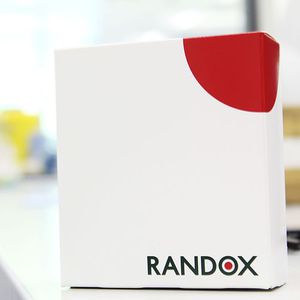
- Laboratory
- Laboratory medicine
- Solution reagent
- Randox Laboratories
- Products
- Catalogs
- News & Trends
- Exhibitions
Solution reagent CH1383for clinical chemistryliquidtotal cholesterol
Add to favorites
Compare this product
Characteristics
- Type
- solution
- Applications
- for clinical chemistry
- Format
- liquid
- Tested parameter
- total cholesterol, HDL cholesterol, triglycerides
- Storage temperature
Max.: 8 °C
(46 °F)Min.: 2 °C
(36 °F)
Description
There are several methods available for measurement of HDL Cholesterol
Including Direct Clearance and Phosphotungstic Acid
Exceptional correlation with standard methods
A correlation coefficient of r=0.99 for the Precipitation and Ultracentrifugation methods, was verified against the CDC reference method
HDL Cholesterol-Direct Clearance Method
Direct Clearance Method
Liquid ready-to-use reagents
What is the HDL Cholesterol assay used for?
High-density lipoproteins (HDL) are one of the major classes of plasma lipoproteins. They are composed of a number of heterogeneous particles, including cholesterol and vary with respect to size and content of lipid and Apolipoprotein. HDL serves to remove cholesterol from the peripheral cells to the liver, where the cholesterol is converted to bile acids and excreted into the intestine.
Accurate measurement of HDL-C is of vital importance when assessing patient risk from CHD. Direct measurement gives improved accuracy and reproducibility when compared to precipitation methods.
HDL is usually requested with other tests, either with cholesterol or as part of a lipid profile, including LDL and triglycerides. The combination of total cholesterol and HDL is very useful for screening for the risk of heart disease.
Patients at risk include:
Smokers
Men over 45 years and women over 55 years
Those with Hypertension (blood pressure 140/90 or higher or if taking medications for high blood pressure)
Catalogs
No catalogs are available for this product.
See all of Randox Laboratories‘s catalogsRelated Searches
- Randox test kit
- Randox solution reagent
- Blood assay kit
- Randox molecular biology reagent
- Randox research reagent
- Randox diagnostic reagent
- Randox protein reagent
- Randox laboratory reagent
- Immunoassay rapid diagnostic test
- Randox enzyme reagent
- Molecular test kit
- Cassette rapid diagnostic test
- Whole blood detection kit
- Respiratory infection test kit
- Randox rapid virus test
- Randox histology reagent
- Randox biochemistry reagent
- Randox rapid infectious disease test
- Randox immunoanalysis reagent
- Cassette assay kit
*Prices are pre-tax. They exclude delivery charges and customs duties and do not include additional charges for installation or activation options. Prices are indicative only and may vary by country, with changes to the cost of raw materials and exchange rates.
























































































